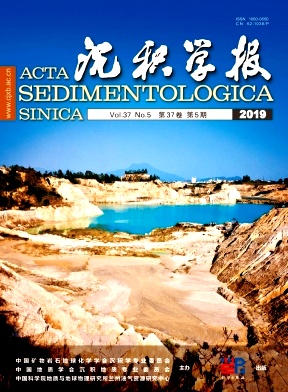Study on Sedimentary Characteristics of Shallow-water Deltas and Isochronous Stratigraphic Framework: An example of Ed2 of 4-3 zone of Nanpu oil field
doi: 10.14027/j.issn.1000-0550.2019.017
- Received Date: 2018-11-24
- Rev Recd Date: 2019-01-07
- Publish Date: 2019-10-10
-
Key words:
- shallow water small lake /
- delta lobe /
- sedimentary facies /
- sedimentary characteristics
Abstract: In previous studies,the development scheme of the Ed2 of 4-3 zone of Nanpu oil field was based on the traditional sedimentary fan delta model,which established the relationships by noting similarities between injection-production and a layered model; however, the results do not perfectly reflect actual development. This is particularly represented by non-uniform oil-water contact and inaccurate and poor efficiency of water-driven oil. Guided by modern sedimentological methods combined with a comprehensive analysis of core data from a large number of wells and geophysical data,the D2 of the 4-3 zone was determined as a typical shallow-water delta. The study area was a delta front deposit,and the sedimentary tectonic background was a small lake in a step-fault zone. Compared to shallow-water deltas on gentle slopes in large lake basins,it is obvious that the sedimentary characteristics in this case were controlled by accommodation space. This is mainly evident from the channel sand dominated by middle-fine sandstone of sub-maturity and poor sorting,and the short transportation distance of the sediments. The sedimentary structure was mainly massive bedding,parallel bedding and cross-bedding,The sedimentation rhythm is interactive-positive. Guided by seismic sedimentology and seismic facies characteristics,it was seen that complex delta lobes resulted from frequent shifting of the distributary channels,so the flow line is indistinct and imprecise. It was difficult to determine the deposit microfacies. Single lobes were deposited when the channel changed course. This is the primary element of a delta whose internal features are layer-isochronous. Many lobes overlapped in 3D space with a very complex interrelationship,and were not layer-isochronous. The contact between lobes and the properties of the surface between them determined their connectivity,which significantly influenced fluid flow in the reservoir. The different seismic resolution ratios distinguished between the bigger lobe deposits and allowed their scale and form to be deconstructed,revealing the history of the lower levels of the lobe deposits. Ultimately,three high-level lobes and 28 low-level lobes were picked out in this way. Guided by this new knowledge,we established an exploitation strategy that included reorganizing the well network pattern. Oil recovery efficiency has significantly improved as a result.
| Citation: | LI YanZe, WANG ZhiKun, SHANG Lin, WANG YuJia. Study on Sedimentary Characteristics of Shallow-water Deltas and Isochronous Stratigraphic Framework: An example of Ed2 of 4-3 zone of Nanpu oil field[J]. Acta Sedimentologica Sinica, 2019, 37(5): 1079-1086. doi: 10.14027/j.issn.1000-0550.2019.017 |






 DownLoad:
DownLoad: